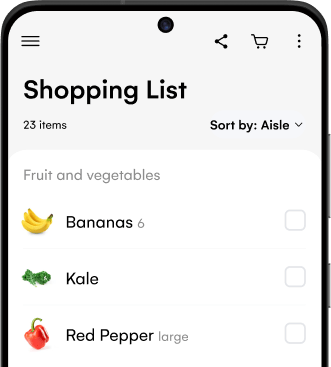Estimated reading time: 7 minutes
Are you aware of how your mood and feelings affect your eating habits? Some people eat when they are stressed, while others forget to eat. The media inundates society with messages on “good” foods and “bad” foods; it’s nearly impossible to eat anything without hearing a faint whisper of judgment from somewhere. Mindful eating can help you feel more connected to the process of eating and nourishing your body, so you’re less likely to do it on autopilot and not even notice what you’re consuming.
Analyse nutritional information for any recipe

It’s amazing what happens when you remove the pressure around eating. Try to eradicate any guilt from eating specific food types. It’s time to reconnect with your enjoyment of food and establish a healthy and wholesome relationship with your sustenance.

What is mindful eating?
You have likely heard of mindfulness, a practice that brings the mind and attention into the present. Mindful eating is derivative of this. Mindful eating helps you connect with the preparation and consumption of food in a way that is in the moment, thoughtful, and free from judgment.
There are four key elements to consider when it comes to mindful eating.
- What you eat.
- Why you eat it
- How much/how much often you eat
- How to eat mindfull
Mindful eating is about paying attention and being intentional with your food choices.
What are the benefits of mindful eating?
Mindful eating encourages you to stop and think about what you want to put into your body. It allows you to recognize foods you thrive on and foods that detract from your well-being.
The adage “you are what you eat” bears a lot of truth. Mindful eating helps you make healthier decisions. But that isn’t the main (or only) reason to adopt mindful eating habits,In essence, mindful eating means being fully attentive and present as you buy, prepare, serve, and eat your food. The idea behind it is to help you savor the moment and the act of eating food and encourage you to be fully present and engaged as you do so.
That said, many people do lose weight when they adopt mindful eating practices. This is partly because they take longer to eat, which increases satiety, and partly because you commit to being fully engaged and in the moment when you eat, which makes it easier for you to consume what your body needs.

4 easy ways to practice mindful eating
Mindful eating does not mean you have to cut out all treats. It’s essential to incorporate treats into your eating experience. It simply means that you are aware of foods you consume and are intentional in both your choosing and eating of them. It also helps you appreciate any treats all the more, as you’re really savoring the moment and the act of eating.
Here are a few tips to help you get started with mindful eating.
1. Give yourself adequate preparation time before eating
Consider food planning and preparation the first stage of mindful eating. Chopping vegetables and measuring out spices is part of your culinary experience. Chopping, weighing, sieving, and peeling are all food preparation processes that can draw you into the moment.
When you spend time planning your meals, reviewing ingredient lists, and then shopping with a specific meal plan purpose, you build a deeper connection with your food. For instance, pick up a red pepper and assess if it fits your needs for the specific dish you need it for. This focus will cause you to pay attention to its shape, size, color, texture, and ripeness—instead of mindlessly adding things to your cart, unsure of the ensemble you are concocting.
If you are time-poor, a handy option is to build a habit of batch cooking and advance meal preparations.
2. Pay attention to the flavors and textures
Don’t be that person who throws their lunch down their gullet while sitting at their computer. Not only is it off-putting for colleagues, but it also isn’t healthy for you. Instead, take the time to sit and relax. Pay attention to your food.
- What aromas can you smell before you taste your food?
- Is it hot or cold?
- Is there an aftertaste?
- What herbs or spices can you detect?
- What are the textures like?
- How does the flavor develop?
Do you lean toward certain textures? Are your food adversities all about flavor, or does texture come into play? Some people think mushrooms are like polystyrene. Others enter a trance state, crunching their way through potato crisps like popping bubble wrap.
Dive into our content and find culinary inspiration

Take a moment to imagine you are sucking on sour candy. Did your mouth water? Your mind is a prime source of power and insight; if your imagination can induce this physical response, consider what you can notice when you tune into each mouthful of food.
Allow your taste buds and salivary glands to guide you on a journey of sensation. Chewing food slowly is an aspect of mindful eating and aids digestion.
Did you know that chewing food slowly also aids weight management by helping you listen to your brain when it tells you that you are satiated?

3. Be mindful of your emotions around eating and food
Emotional eating is associated with overeating in response to negative stimuli. Have you ever turned to chocolate to try and appease feelings of sadness? Or maybe you have used pizza to resolve inner feelings of frustration.
Food and your relationship with it are complicated. When you practice eating mindfully, you can control your impulses, develop an understanding of your emotions and gain self-awareness in and around food.
If you use chocolate as a comforter, for example, next time you have a chocolate craving it might be time to sit with your emotions and figure out the source of your feelings.
You can be aware of your emotions and feelings in and around food without falling victim to emotional eating; mindful eating helps with this. Be aware that emotional eating riddles you with unhealthy and detrimental feelings of guilt and shame.
If this sounds all too familiar, we have some advice on understanding emotional eating as well as on common triggers for food cravings and how to beat them.
4. Consider if your food choices reflect your needs and values
Are you giving your body the nutrients it needs?
If you have a dedicated fitness schedule, mindful eating will help you live holistically, ensuring your food habits are in tune with your fitness regime. You wouldn’t put sub-class fuel into a high-performing sports car, would you? Mindful eating helps you treat your body the way it needs to be treated to perform at its best.
Take a moment to reflect on your morals and values. If you are passionate about the environment and animal rights, do your food habits reflect this?
Synchronizing your values and eating habits is vital to mindful eating and will help you lead an authentic life.

Wrapping up
When you savor your culinary experiences, you develop a more profound gratitude for your food. The processes of planning and preparing food help draw you into the present moment, and enhances your awareness of the food and body connection.
Mindful eating is an effective way to build stronger connections with yourself through being attuned to the sustenance needs of your mind and body.
Words by Ali Hall



